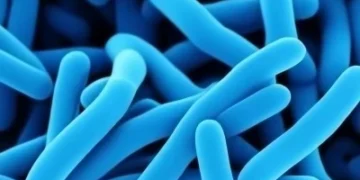PFAS and Human Health (in italiano)
PFAS are a major environmental concern due to their persistence over time. These chemicals have been widely used since the 1950s in a variety of industrial and consumer applications, but their impact on the environment has become increasingly evident over the years.
Persistence of PFAS over time
One of the main concerns is their ability to persist over time without being easily degraded. When PFAS are released into the environment – for example through industrial wastewater, firefighting foams or contaminated land – they can remain in soil and water for decades or even centuries. These substances spread rapidly and can contaminate water supplies, rivers, lakes and agricultural land, posing a serious problem for local ecosystems.
Groundwater contamination
Another critical aspect concerns the contamination of groundwater, which is a major source of drinking water. Due to the solubility of PFAS in water, concentrations can easily accumulate in water resources, posing a risk to human and animal health. Furthermore, contamination extends through the food chain: PFAS can accumulate in fish, livestock and crops, and then enter the human body through food.
Biodiversity
PFAS pollution also has a direct impact on biodiversity, as many animal and plant species are vulnerable to contamination. Studies have shown that PFAS interfere with the reproductive capacity of some species, impair their growth, and alter fundamental biological processes.
In response to this growing crisis, many countries are trying to address the problem by regulating the use of PFAS and improving water monitoring and purification methods. However, the challenge is complex, as the persistence of these substances can make remediation time and resources intensive.
PFAS, due to their persistence in the environment and in the human body, can cause various health problems, and scientific evidence on the effects of these substances is accumulating over the years. Their ability to accumulate in body tissues, especially in the blood, liver and kidneys, is one of the main reasons why PFAS are so worrying. These substances do not degrade easily, so prolonged exposure can lead to high levels of PFAS in the body.
PFAS and Human Health
Cancer : Some epidemiological studies have shown a link between exposure to PFAS and an increased risk of developing certain types of cancer, such as kidney and testicular cancer. The research is not yet conclusive, but the correlation has been observed in some groups of people exposed for a long time, such as workers in industries that use PFAS.
Liver problems : Exposure to PFAS can lead to liver damage, including elevated liver enzymes, which is a sign of liver stress or damage. In some cases, long-term exposure can lead to more serious liver disease.
Hormonal and Immune Disruptions : PFAS can disrupt the endocrine system, altering the production of hormones such as thyroid and sex hormones. These hormonal imbalances can have negative effects on reproductive health and development, particularly in children. Additionally, some research suggests that exposure to PFAS may weaken the immune system, making the body more vulnerable to infection.
Effects on pregnancy : Pregnant women who are exposed to PFAS may be at increased risk for pregnancy complications, such as preeclampsia (a condition characterized by high blood pressure and organ damage) and low birth weight in newborns. Additionally, there is concern about possible adverse effects on fetal development, as PFAS can cross the placenta.
Increased Cholesterol : Exposure to PFAS is also associated with elevated blood cholesterol levels, a risk factor for cardiovascular disease. This is one of the most well-documented effects, and is one of the reasons why many health experts are warning about the dangers of these substances.
Exposure and accumulation
Exposure to PFAS occurs primarily through contaminated drinking water, but also through food, dust, cosmetic products, and contact with surfaces treated with these compounds (such as waterproof fabrics or non-stick cookware). Once in the body, PFAS can accumulate over time, as they are not easily metabolized or eliminated. This leads to “bioaccumulation” that increases the risk of long-term damage.
Global response
In recent years, several countries have begun to review regulations regarding PFAS, seeking to reduce population exposure to these substances. This is done by regulating their presence in drinking water, food products and other consumables. However, due to their omnipresence and persistence, the problem is complex and requires long-term solutions to reduce health risks.
The scientific community continues to study the effects of PFAS on human health. The data that have emerged so far suggest that limiting exposure to these substances is essential to protect public health.
Laboratory tests:
Blood count , Dossier: Vitamins , Vitamin E , Vitamin D , Vitamin B6 , Folic acid , Vitamin B12 , Arsenic , Lead
Diseases, symptoms and related pages:
Laboratory tests , Poison control centers , Microplastics , Nanoplastics , PCBs and pollution
























































Discussion about this post